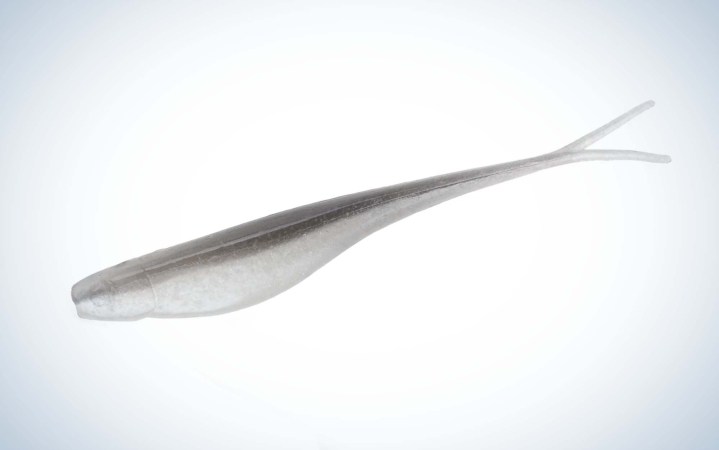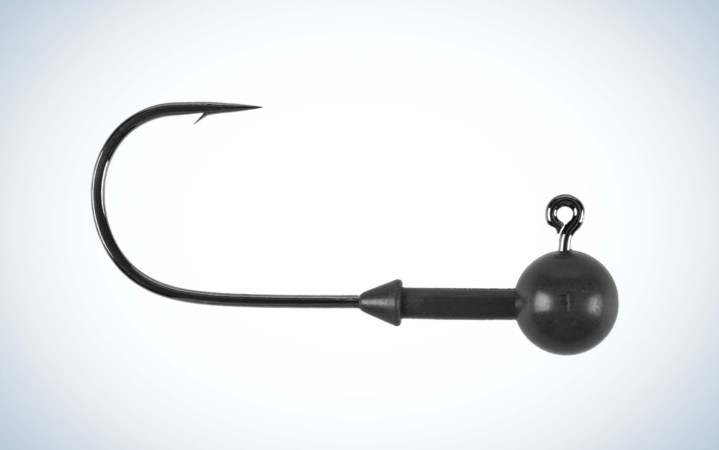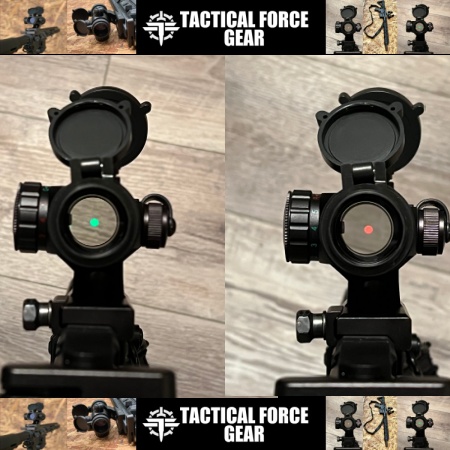Since the popularization of forward-facing sonar, many bass anglers have found success using new ways to fish old techniques. But, it should be no surprise that a few new techniques have evolved along with this new technology.
Now that anglers have had a few years to get their graphs and transducers dialed in, the best in the business have been seen catching bass using techniques like moping, strolling, and hover strolling. These tactics might not have the most exciting names, but there’s no denying that they are catching fish — and lots of them.
To help you implement these techniques in your own fishing, I sat down with Noah Winslow, a professional bass guide and tournament angler who spends practically every day on the water. Winslow has been a guide on Candlewood Lake in Connecticut for four years, and spent the last three years dialing in his forward-facing sonar to help him and his clients have some incredible days on the water.
Understand Moping, Strolling, and Hover Strolling
Photo by Noah Winslow
First let’s define what we’re talking about. The biggest difference in the three most popular FFS techniques comes down to the rig’s weight and how it’s fished. Here’s a brief overview of the three techniques:
- Moping is fishing the bait down in the water column, where bass are suspended just off the bottom. Typically, you’ll find most success moping in colder water scenarios. This presentation is practically vertical, so a 90-degree jig head is required. You’ll find the bass using your FFS and drop your moping rig down and hold it just in front of the bass and lightly shimmy the bait with your rod tip until they bite.
- Strolling is a lot more active than moping. When fishing a strolling rig, you’ll be casting at actively feeding fish and reeling your bait over top of them to trigger a bite. When strolling, you’ll be using a heavier jig head, and rod and reel setup to specifically target suspended bass in the middle of the water column.
- Hover Strolling is the lighter version of strolling and is typically only used for bass that are feeding high in the water column, just under the surface. For hover strolling, you’ll be using a lighter jig head or nail-weighted soft plastic that you hover above the bass and slowly reel towards the boat, triggering them to bite. Since it’s a lighter technique, the rod and reel setup will reflect that as well.
The bass on Candlewood feed primarily on alewife, a small baitfish that tends to school in deep water. When the alewife head to the deep water, the bass follow and suspend near the baitfish, waiting for an easy meal. That makes them primed to feed on a strolling rig, something that Winslow figured out a few years ahead of the curve, allowing him to win some big tournaments on Candlewood and other lakes in the Northeast.
A strolling rig is simple, using a jig head and a minnow-style bait, you’ll cast at bass you identify using your forward-facing sonar and swim the bait above them, causing them to bite. Sounds easy enough, right? Well, it might be a bit more intricate than that, so here’s everything you need to know about fishing a strolling rig.
The Strolling Rig

Photo by Noah Winslow
A few years ago, Winslow began to figure out strolling, or what he used to refer to as minnow rigging, on suspended bass that were feeding on balls of baitfish. Since then, he’s found they don’t necessarily have to be on bait, they’ll also suspend over structure on the bottom or under floating structure like a sailboat or floating dock. As long as the bass are suspended, you can fish a strolling rig.
Typically, Winslow recommends fishing a strolling rig with a ¼ to ⅜-ounce jig head and a 3.5-inch soft plastic minnow bait like the Z-Man Scented Jerk Shadz or the Strike King Baby Z-Too. The key here is making sure your strolling rig looks as realistic as possible. The soft plastic needs to match the baitfish the bass primarily feed on, and has to be threaded onto the jig head as straight as possible. That is non-negotiable according to Winslow.
“If your soft plastic isn’t 100 percent straight and inline with the jig head, the bass are going to shy away from it,” Winslow says. “When fishing a strolling rig, it’s imperative to make the presentation as natural as humanly possible.”
Read Next: MEGA Live vs LiveScope: What’s the Best Forward Facing Sonar?
How to Rig a Strolling Rig
As you can imagine, rigging a strolling rig isn’t all that complicated. You’ll simply need a good-quality jig head and the minnow-style soft plastic you’re looking to throw. Rigging should take 30 seconds or less. Below is a step-by-step guide.
Step 1: Select your jig head and tie it to your line using a Palomar knot. Another option that Winslow has started using more and more is the Shark knot. He prefers that knot for strolling because it helps hold the bait at the horizontal angle, and the knot doesn’t slide on the hook eye like a Palomar will.
Step 2: Select and slide your soft plastic onto the jig head centered and perfectly straight. The soft plastic can’t be crooked at all, otherwise it won’t run correctly in the water.
What Makes the Strolling Rig so Effective?

Photo by Noah Winslow
The simplicity of a strolling rig paired with a natural presentation is what makes this technique so deadly. The subtle minnow-style bait looks incredibly realistic in the water column, and the size of the rig makes it an incredibly easy meal for actively feeding bass. The strolling rig with the right color soft plastic looks exactly like an alewife quivering in the water. From the silhouette of the bait to the quivering action you give the bait by wiggling your rod tip, this rig triggers a natural response to feed on a dying alewife.
Bass that are suspended and feeding on alewife or other baitfish also tend to “feed up.” That means they’ve got their eyes focused on anything above them in the water column, typically because that’s where the baitfish are. As they’re scouring the water above them and your strolling rig gently rolls by, it’s almost like they have to eat it, they can’t help it.
When to Throw a Strolling Rig
Winslow has found that bass will eat a strolling rig on almost any given day, but certain conditions align for lights out days on the water. His favorite days to fish a strolling rig is during a front with cloudy or rainy conditions. The bass tend to roam more in search of baitfish and are much more likely to chase down and eat a strolling rig. In the case of a low pressure system where it’s still sunny out, he’s found that the bass will still eat a strolling rig, you simply have to downsize your line in clearer water.
As for time of year, Winslow has caught bass on a strolling rig right at open water through the freeze, but there are two times a year where he locks the rig into his hand and won’t put it down.
His favorite time of year for the strolling rig is the early pre-spawn when bass are still out deep but beginning to make their way towards main points and the mouths of deep creek arms as the water begins to warm. This time of year, the bass seem to congregate in larger schools around giant balls of baitfish, making them easy targets for the strolling rig.
His second favorite time to throw a strolling rig is the end of summer and into the early fall. Similar to how the bass react in the spring, he finds them in similar areas just on the edge of the deep water basins they spend the dog days of summer in. As the water cools down, the alewives begin to stack up again, making the bass easier to find under the massive clouds of bait.
The Gear for Fishing a Strolling Rig
Picking the Right Strolling Rig Rod

See It
When you’re deciding what rod to throw your strolling rig on, it’s imperative that you pick a rod with a soft enough tip to prevent ripping the bait out of the bass’ mouth, but enough backbone for solid hooksets. Winslow’s favorite strolling rig rod is the G. Loomis 852 NRX+ 7’1” Medium jig and worm rod. His favorite feature of this rod is the soft tip that lets him give subtle action to the bait. The tip loads gently when the bass eat his strolling rig, allowing him to make good, clean hooksets each time.
Picking the Right Strolling Rig Reel

See It
For Winslow’s strolling rig reel selection, he almost always goes with a 3000-size spinning reel since it will typically be a faster gear ratio, allowing him to pick up slack line from the bait falling through the water column. You’ll also be chasing specific bass using your FFS unit, so being able to reel up quickly and re-cast is very important. His two go-to spinning reels are the Shimano Sustain FJ and the Shimano Exsence A, both of which feature the MGL rotor that allows for a smooth start and stop reeling motion.
Picking the Right Strolling Rig Baits

See It
The soft plastic you choose for your strolling rig might just be the most important detail. You’ll want to match the hatch with whatever baitfish is most common in your local body of water. For Winslow, that’s alewife. To match the hatch, he’s found the best soft plastic baits for his strolling rigs to be the Z-Man Scented Jerk Shadz or the Strike King Baby Z-Too. These two soft plastics cover all of the colorways he leans on, and stay on the jig head even after catching fish after fish.
Picking the Right Strolling Rig Jig Heads

See It
When you’re picking which jig head to throw your strolling rig on, the biggest decision is which weight to go with. Winslow typically sticks with a ¼-ounce head or a ⅜-ounce head. By gauging how aggressive the fish are, he makes his selection. On more aggressive days, he likes to throw a heavier head as it allows him to move it more aggressively in the water column. His two go-to jig heads are the Dirty Jigs Guppy Head and the Keitech Super Round Tungsten Head. Both come with great hooks that you won’t have to worry about bending during the fight with a big bass.
Picking the Right Strolling Rig Line

See It
Regarding the line to use for your strolling rig, Winslow always throws braided line with a fluorocarbon leader. He prefers this setup for the added sensitivity of the braid, and it saves him from using a pile of fluorocarbon every time he re-ties. For braided line, he tends to stick with PowerPro 10-pound Super Slick V2, and for fluorocarbon leader he leans on 8 to 10-pound Shimano Mastiff. If he needs the strolling rig to sink faster, he’ll go with 8 pound, and if the bass are super aggressive, he’ll stick to 10 pound.
Final Thoughts on Strolling
After getting an hour-long breakdown on the strolling rig from Winslow, I realized just how intricate fishing a strolling rig can be. There’s a lot of moving parts when it comes to matching your bait to the right baitfish, along with simply finding the bass using your FFS unit. Regardless, Winslow encourages anyone new to strolling to avoid being frustrated if the bass come up to the bait and turn away. That’s just the bass telling you to make a slight adjustment in your line size, bait selection, or even a gut check to make sure your bait is on the jig as straight as possible.
Winslow also wanted to make it clear that not every day on the water will be perfect for strolling. If you’re finding that the bass don’t seem to be suspended, it’s probably a good idea to try a different technique. With that said, just because it doesn’t work one day doesn’t mean you should write off strolling as a whole. It’s an incredibly effective way to catch more bass, and once they start biting, it can be some of the most fun you’ll have on the water.
Read the full article here




